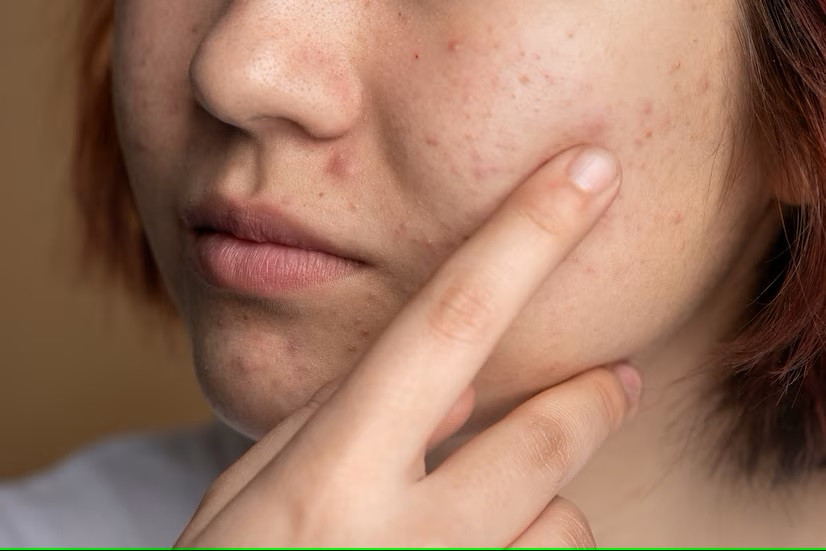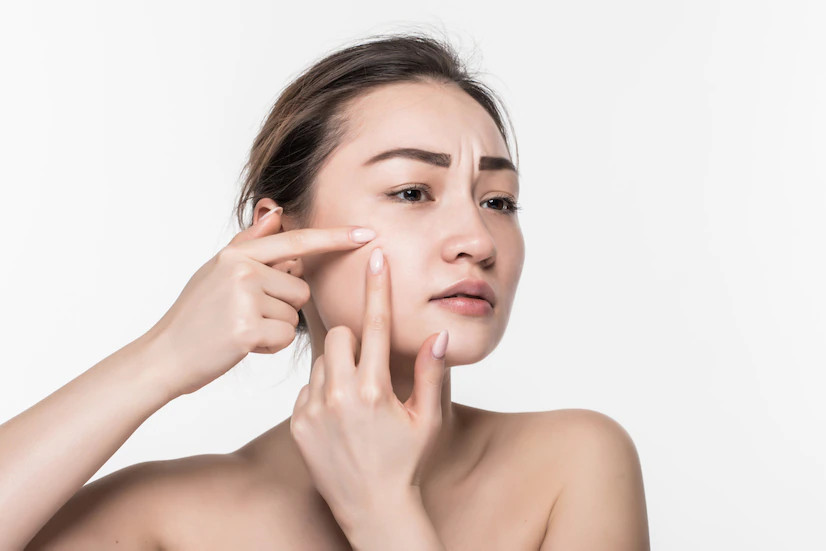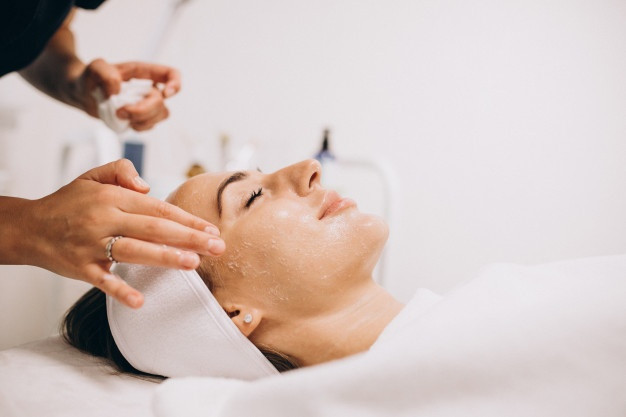Jerawat adalah salah satu masalah kulit yang banyak dialami baik kelompok usia remaja maupun dewasa. Bukan hanya jerawat yang menjadi masalah, namun juga bekas jerawat yang muncul banyak menyebabkan orang tidak percaya diri.
Namun tahukan Anda bahwa jenis luka bekas jerawat bisa bermacam-macam dan membutuhkan penanganan yang berbeda-beda? Yuk simak ulasannya berikut ini.
Jenis-Jenis Luka Bekas Jerawat
Sebelum mengobati bekas jerawat, penting untuk mengetahui jenis luka bekas jerawat yang Anda miliki. Dilihat dari bentuknya, jenis luka atau noda bekas jerawat terdiri dari berbagai jenis, yaitu:
Bekas luka atrofi
Bekas luka atrofi atau bopeng jerawat terjadi ketika ada jaringan kulit yang hilang sehingga luka ini membentuk cekungan. Jenis luka ini terbagi menjadi tiga, yaitu:
- Boxcar, yaitu bentuk luka yang lebar berbentuk U dan memiliki tepi yang tajam. Bekas luka ini dapat berbentuk dangkal atau dalam. Luka yang dangkal lebih mudah dalam merespon perawatan jerawat yang diberikan.
- Ice pick, yaitu bopeng bekas jerawat yang memiliki cekungan dalam dengan bentuk V, mirip seperti bekas cukilan. Pada beberapa kasus bekas bopeng jerawat juga dapat terlihat seperti bekas luka cacar. Di antara bekas jerawat lainnya bekas luka ini yang paling sulit dihilangkan karena meninggalkan luka yang dalam.
- Rolling, yaitu bopeng memiliki tepi yang tidak jelas dan membuat kulit tampak menggulung atau bergelombang.
Bekas luka hipertrofi
Bekas luka hipertrofi terjadi karena produksi kolagen terlalu banyak saat proses penyembuhan jerawat. Akibatnya terbentuk kelebihan massa jaringan sehingga permukaan luka menonjol ke atas. Bekas luka ini juga dikenal dengan keloid dan muncul di area punggung dan dagu.
Baca Juga: Kenali Perbedaan Jerawat Hormonal dan Jerawat Bakteri
Cara Menghilangkan Luka Bekas Jerawat
Pada kasus ringan, jerawat ini biasanya bisa diatasi dengan bahan-bahan alami atau skincare khusus jerawat dan obat jerawat yang dijual bebas di pasaran.
Ketika peradangan jerawat mulai parah dan tidak segera membaik dengan pengobatan dan skincare, sebaiknya segera periksakan ke dokter dan hindari memencet jerawat agar tidak meninggalkan bekas luka.
Beberapa jenis bekas luka jerawat membutuhkan penanganan yang berbeda. Berikut ini tindakan yang bisa dilakukan untuk menyamarkan bekas jerawat:
Microdermabrassion
Microdermabrassion adalah perawatan menggunakan kristal dan vakum untuk mengangkat sel kulit mati. Alat microdermabrassion akan mengikis lapisan teratas kulit untuk mendorong regenerasi sel kulit di bawahnya sehingga kulit yang muncul menjadi lebih rata dan halus. Perawatan ini bisa dilakukan untuk bekas luka atrofi seperti boxcar, rolling dan ice pick.
Baca Juga: Lemon untuk Mengatasi Jerawat, Benarkah Efektif?
Chemical peeling
Chemical peeling dilakukan dengan mengikis lapisan teratas kulit menggunakan obat-obatan kimiawi. Dalam memilih larutan kimia, Anda perlu menyesuaikan dengan jenis bekas luka jerawat yang muncul.
Jika bekas luka jerawat adalah jenis discoloration atau hiperpigmentasi yang menunjukkan perubahan warna kulit seperti kehitaman, Anda bisa menggunakan larutan asam (acid) seperti salicylic acid, lactic acid, atau glycolic acid.
Sedangkan jika bekas luka dalam seperti ice pick, Anda bisa menggunakan bahan trichloroacetic acid (TCA), namun sebaiknya gunakan bahan TCA hanya dengan konsultasi dokter.
Laser
Terapi laser bisa digunakan untuk mengatasi berbagai jenis bekas luka jerawat baik luka atrofi maupun hipertrofi. Untuk mengatasi keloid, terapi laser yang biasa digunakan adalah pulsed-dye laser.
Merawat bekas luka jerawat perlu disesuaikan dengan jenis bekas luka yang muncul. Konsultasikan ke dokter agar mendapat penanganan yang sesuai dengan kondisi Anda. Jika membutuhkan konsultasi Anda bisa memanfaatkan fitur konsultasi pada aplikasi Ai Care.
Mau tahu tips dan trik kesehatan, pertolongan pertama, dan home remedies lainnya? Cek di sini, ya!
- dr Nadia Opmalina
Higuera, V, (2023). Acne Scars 101: A Complete Guide to Getting Smooth Skin Again. Available from: https://www.everydayhealth.com/acne/remove-acne-scars.aspx
Ferreira, M. (2023). How to Best Treat Acne Scars. Available from: https://www.healthline.com/health/acne-scars
Johnson, J. (2022). How to Best Treat Acne Scars. Available from: https://www.medicalnewstoday.com/articles/324784










